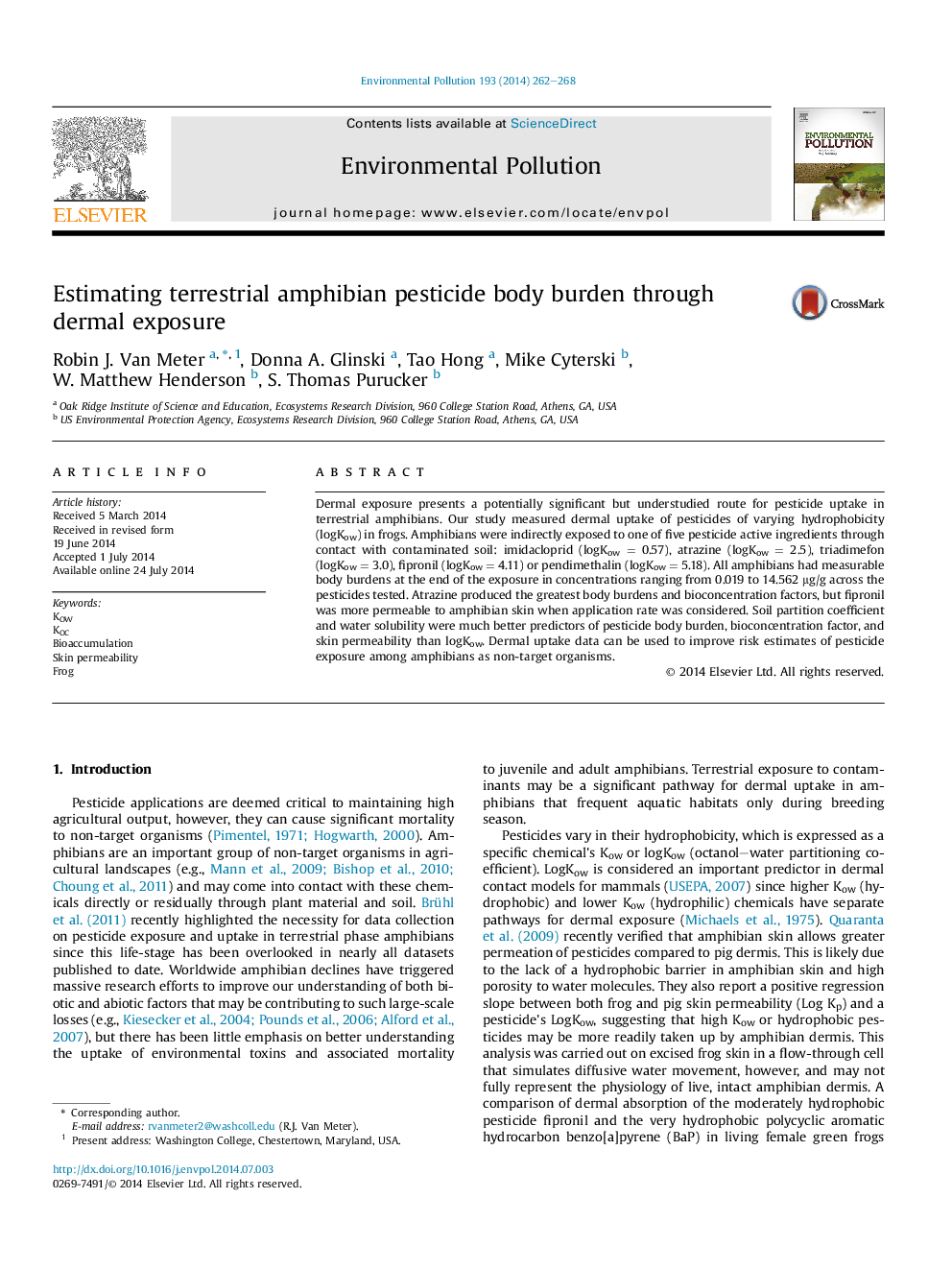| Article ID | Journal | Published Year | Pages | File Type |
|---|---|---|---|---|
| 6318150 | Environmental Pollution | 2014 | 7 Pages |
Abstract
Dermal exposure presents a potentially significant but understudied route for pesticide uptake in terrestrial amphibians. Our study measured dermal uptake of pesticides of varying hydrophobicity (logKow) in frogs. Amphibians were indirectly exposed to one of five pesticide active ingredients through contact with contaminated soil: imidacloprid (logKow = 0.57), atrazine (logKow = 2.5), triadimefon (logKow = 3.0), fipronil (logKow = 4.11) or pendimethalin (logKow = 5.18). All amphibians had measurable body burdens at the end of the exposure in concentrations ranging from 0.019 to 14.562 μg/g across the pesticides tested. Atrazine produced the greatest body burdens and bioconcentration factors, but fipronil was more permeable to amphibian skin when application rate was considered. Soil partition coefficient and water solubility were much better predictors of pesticide body burden, bioconcentration factor, and skin permeability than logKow. Dermal uptake data can be used to improve risk estimates of pesticide exposure among amphibians as non-target organisms.
Related Topics
Life Sciences
Environmental Science
Environmental Chemistry
Authors
Robin J. Van Meter, Donna A. Glinski, Tao Hong, Mike Cyterski, W. Matthew Henderson, S. Thomas Purucker,
